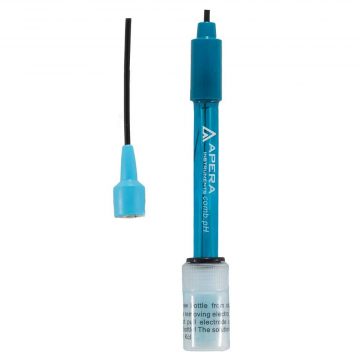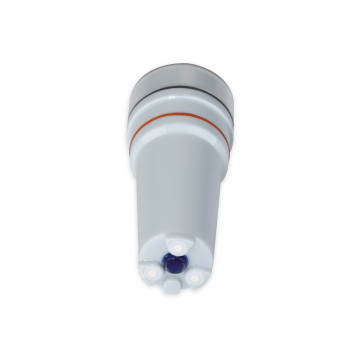Electrodes with liquid electrolyte solution (pH, redox) can contain one or more diaphragms. These diaphragms are used to establish electrical contact between the reference electrode and the sample solution without contaminating the electrolyte with the sample. In addition to the types of diaphragms, the arrangement also plays a major role.
There are electrodes with one diaphragm, with two or three diaphragms of the same type, or even with a double diaphragm – these are called “double junction”. I.e. a diaphragm is inside the electrode and shields the reference electrode from the external electrolyte. A second diaphragm then provides the liquid connection to the sample solution. This type of electrode therefore requires two electrolyte solutions.
The advantage of this variant is that the electrode is filled with two electrolyte solutions. The reference electrode always remains in a defined electrolyte.
As a result, the electrode has a longer service life than an electrode with one or two diaphragms, and it does not contaminate as quickly. A dirty diaphragm can lead to deviating measurement results. For this reason, it is advisable to use an instrument with a double junction design for very impure samples.
Here you can find our products with “double junction
-
 GroStar™ GS4 pH/EC pocket meter191.59 €inkl. 19% MwSt., plus shipping
GroStar™ GS4 pH/EC pocket meter191.59 €inkl. 19% MwSt., plus shipping -
 201DJ-C Double junction combined pH electrode, BNC51.17 €inkl. 19% MwSt., plus shipping
201DJ-C Double junction combined pH electrode, BNC51.17 €inkl. 19% MwSt., plus shipping -
 PH60F-DE Spare electrode for PH60F-Z85.68 €inkl. 19% MwSt., plus shipping
PH60F-DE Spare electrode for PH60F-Z85.68 €inkl. 19% MwSt., plus shipping -
 PH60-DE Spare electrode for PH60-Z61.88 €inkl. 19% MwSt., plus shipping
PH60-DE Spare electrode for PH60-Z61.88 €inkl. 19% MwSt., plus shipping -
 PC60-DE Replacement electrode for PC60-Z105.91 €inkl. 19% MwSt., plus shipping
PC60-DE Replacement electrode for PC60-Z105.91 €inkl. 19% MwSt., plus shipping


